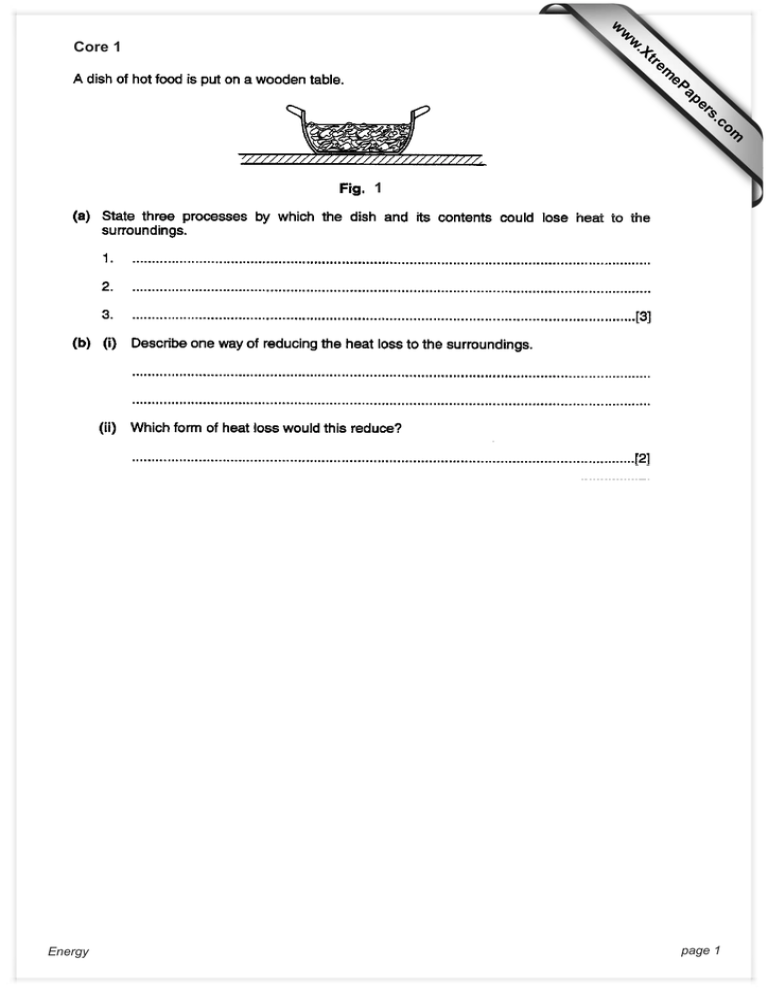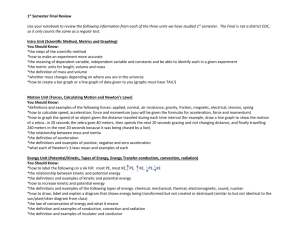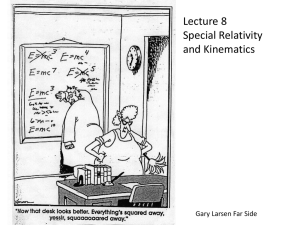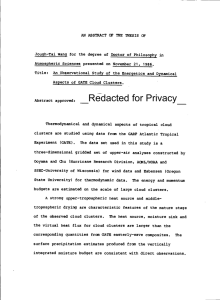Core 1 1 www.XtremePapers.com page 1
advertisement

ap eP m e tr .X w om .c s er page 1 Energy w w Core 1 1 Core 2 Energy page 2 Core 3 2 2 Energy page 3 Alternative to Practical 1 3 3 Energy page 4 Alternative to Practical 1 4 4 4 5 5 5 Energy page 5 Extension 1 6 6 Energy page 6 Extension 1 Energy page 7 Extension 1 Energy page 8 Core 1 a any three of conduction convection radiation evaporation b(i) any suitable procedure e.g. a lid insulating cover or wrap (ii) it would depend on the choice for (i) but from above either evaporation or conduction Energy page 1 Core 2 a electrical to heat (thermal) and light b kinetic (motion) potential (position) c Energy geothermal page 2 Core 3 Answer should include two of these points. a description of convection hot water rises there can be no convection if it is heated at the top / only the top would be heated in this case smaller amounts of water can be boiled Energy page 3 Alternative to Practical 1 a(i) to reduce or prevent conduction of heat / to insulate the can (ii) produce a uniform temperature (iii) assists in accurate temperature measurement b(i) 18.7 or 18.8 C o o 8.9 or 9 C o between 9.7 and 9.9 C (ii) assists accuracy helps avoiding parallax helps to be more certain when the thread reaches the scale division c take the reading with the line of sight perpendicular to the scale mark Energy page 4 Extension 1 a(i) the potential energy gained each time it is raised = mgh = 200 x 10 x 6 = 12000 J (ii) the potential energy lost = the kinetic energy on impact 2 12000 = ½ m v 2 v = 2 x 12000 / 200 = 120 v = 10.95 or 11 m/s b(i) as the mass moves against the resistance of the ground kinetic energy is transferred to heat energy / sound energy (ii) at impact the kinetic energy / momentum is large after impact kinetic energy / momentum is soon zero kinetic energy / momentum change is large slows to rest in a very short time / distance kinetic energy lost = force x distance the pile moves OR the rate of change of momentum = force c lifting suspension / pile deeper after each hit needs more p. e. each time rising mass gains k.e. all lost at top power to stop / brake the rising mass all lost as heat efficiency of motor not 100% lost as heat d Energy greater mass fall greater distance use a motor to drive the mass down use a thinner or pointed pile page 5






